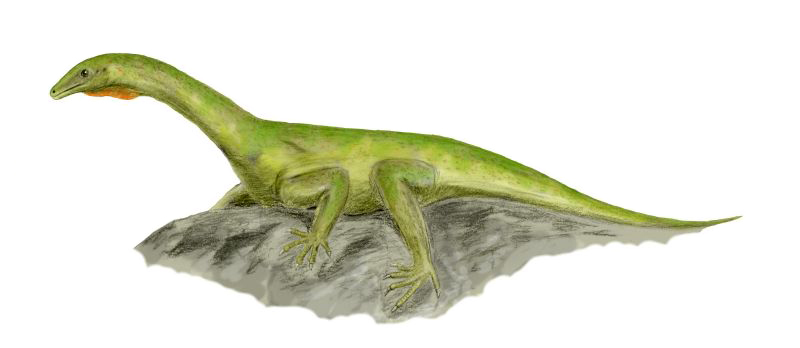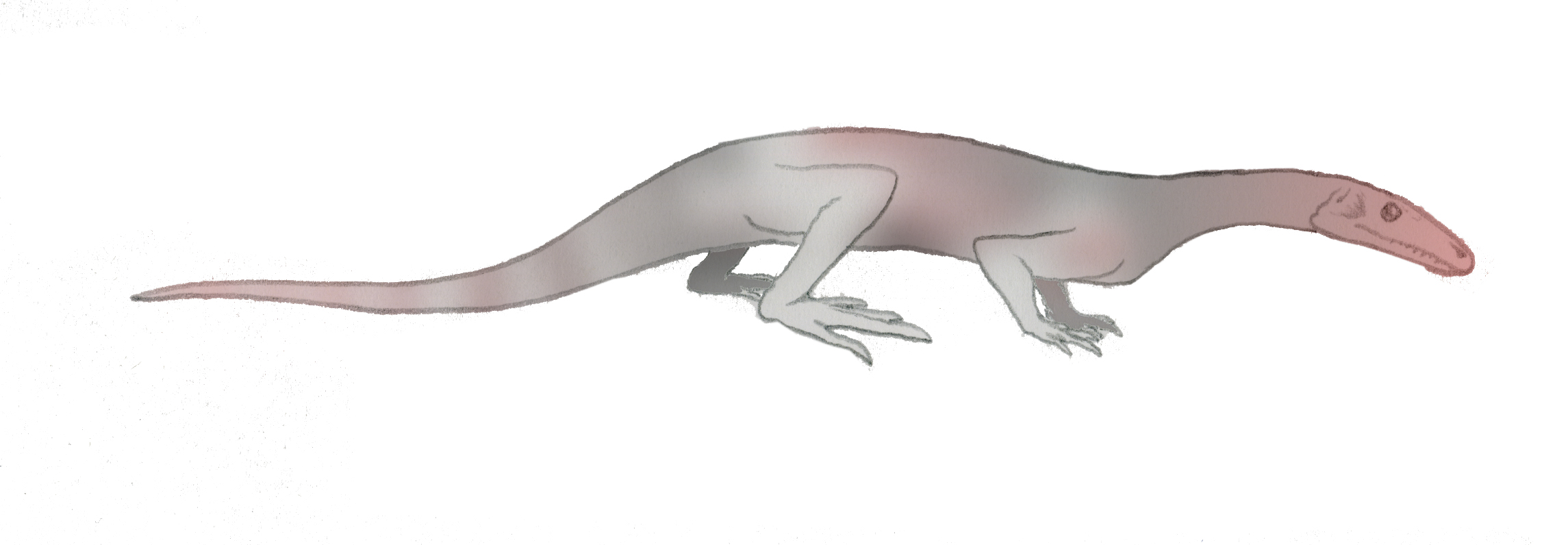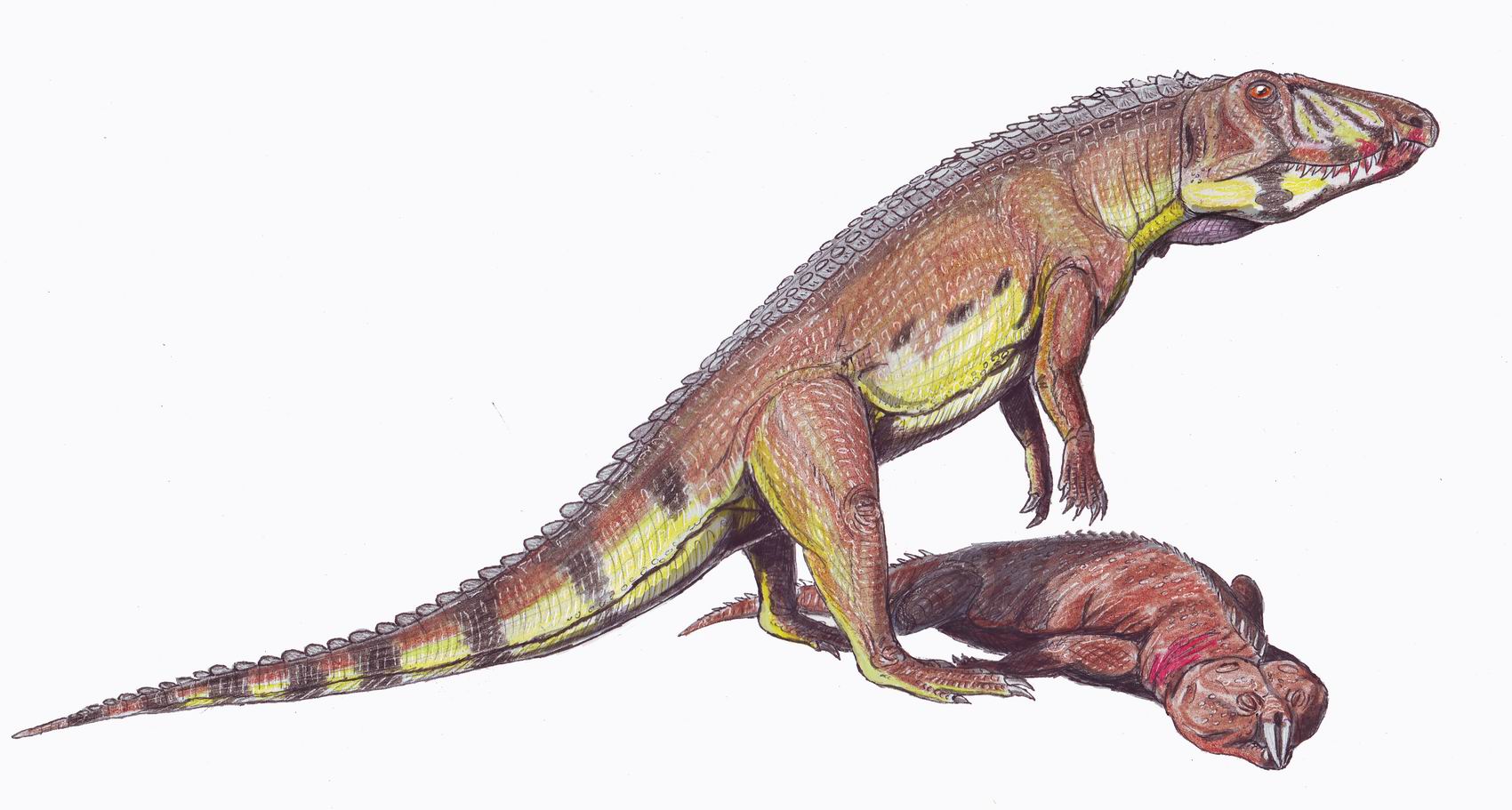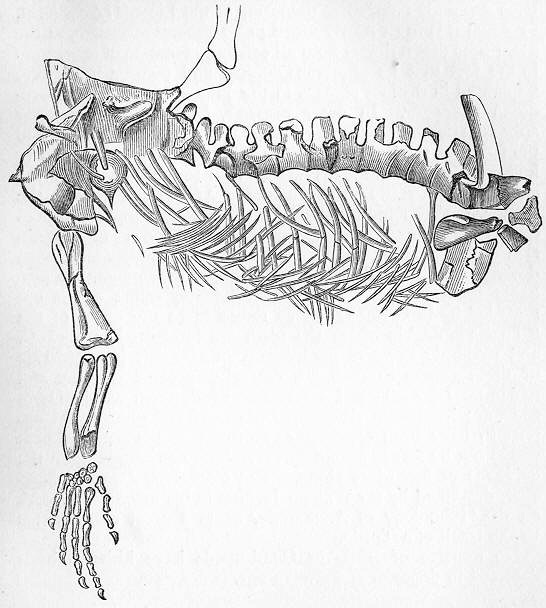|
Prolacertidae
Prolacertidae is an extinct family of archosauromorph reptiles that lived during the Early Triassic epoch. It was named in 1935 by the British palaeontologist Francis Rex Parrington to include the species ''Prolacerta broomi'' of South Africa and Antarctica. In 1979 a second species, ''Kadimakara australiensis'', was described from Australia. Several other genera, such as ''Macrocnemus'', ''Pamelaria'' and ''Prolacertoides'', have also been assigned to this family in the past, but these have been placed elsewhere by later studies, leaving ''Prolacerta'' and ''Kadimakara'' as the only well-supported members. The prolacertids were historically placed within the paraphyletic group Prolacertiformes along with other basal, long-necked archosauriforms like ''Protorosaurus'' and the tanystropheids. However, more recent research has shown that the prolacertids were only distantly related to other "prolacertiforms", and were instead among the closest relatives of Archosauriformes. The cl ... [...More Info...] [...Related Items...] OR: [Wikipedia] [Google] [Baidu] |
Prolacerta Broomi
''Prolacerta'' is a genus of archosauromorph from the lower Triassic of South Africa and Antarctica. The only known species is ''Prolacerta broomi''. The generic name ''Prolacerta'' is derived from Latin meaning “before lizard” and its species name ''broomi'' is in commemoration of the famous paleontologist Robert Broom, who discovered and studied many of the fossils found in rocks of the Karoo Supergroup. When first discovered, ''Prolacerta'' was considered to be ancestral to modern lizards, scientifically known as lacertilians. However, a study by Gow (1975) instead found that it shared more similarities with the lineage that would lead to archosaurs such as crocodilians and dinosaurs (including birds). ''Prolacerta'' is considered by modern paleontologists to be among the closest relatives of the Archosauriformes. History of discovery ''Prolacerta'' was first described by Francis Rex Parrington in 1935 from a single skull recovered near the small town, Middelburg, in ... [...More Info...] [...Related Items...] OR: [Wikipedia] [Google] [Baidu] |
Pamelaria
''Pamelaria'' is an extinct genus of allokotosaurian archosauromorph reptile known from a single species, ''Pamelaria dolichotrachela'', from the Middle Triassic of India. ''Pamelaria'' has sprawling legs, a long neck, and a pointed skull with nostrils positioned at the very tip of the snout. Among early archosauromorphs, ''Pamelaria'' is most similar to ''Prolacerta'' from the Early Triassic of South Africa and Antarctica. Both have been placed in the family Prolacertidae. ''Pamelaria'', ''Prolacerta'', and various other Permo-Triassic reptiles such as ''Protorosaurus'' and ''Tanystropheus'' have often been placed in a group of archosauromorphs called Protorosauria (alternatively called Prolacertiformes), which was regarded as one of the most basal group of archosauromorphs. However, more recent phylogenetic analyses indicate that ''Pamelaria'' and ''Prolacerta'' are more closely related to Archosauriformes than are ''Protorosaurus'', ''Tanystropheus'', and other protorosaurs, ma ... [...More Info...] [...Related Items...] OR: [Wikipedia] [Google] [Baidu] |
Archosauromorpha
Archosauromorpha ( Greek for "ruling lizard forms") is a clade of diapsid reptiles containing all reptiles more closely related to archosaurs (such as crocodilians and dinosaurs, including birds) rather than lepidosaurs (such as tuataras, lizards, and snakes). Archosauromorphs first appeared during the late Middle Permian or Late Permian, though they became much more common and diverse during the Triassic period. Although Archosauromorpha was first named in 1946, its membership did not become well-established until the 1980s. Currently Archosauromorpha encompasses four main groups of reptiles: the stocky, herbivorous allokotosaurs and rhynchosaurs, the hugely diverse Archosauriformes, and a polyphyletic grouping of various long-necked reptiles including '' Protorosaurus'', tanystropheids, and '' Prolacerta''. Other groups including pantestudines ( turtles and their extinct relatives) and the semiaquatic choristoderes have also been placed in Archosauromorpha by some a ... [...More Info...] [...Related Items...] OR: [Wikipedia] [Google] [Baidu] |
Crocopoda
Archosauromorpha (Greek for "ruling lizard forms") is a clade of diapsid reptiles containing all reptiles more closely related to archosaurs (such as crocodilians and dinosaurs, including birds) rather than lepidosaurs (such as tuataras, lizards, and snakes). Archosauromorphs first appeared during the late Middle Permian or Late Permian, though they became much more common and diverse during the Triassic period. Although Archosauromorpha was first named in 1946, its membership did not become well-established until the 1980s. Currently Archosauromorpha encompasses four main groups of reptiles: the stocky, herbivorous allokotosaurs and rhynchosaurs, the hugely diverse Archosauriformes, and a polyphyletic grouping of various long-necked reptiles including ''Protorosaurus'', tanystropheids, and ''Prolacerta''. Other groups including pantestudines (turtles and their extinct relatives) and the semiaquatic choristoderes have also been placed in Archosauromorpha by some authors. Archos ... [...More Info...] [...Related Items...] OR: [Wikipedia] [Google] [Baidu] |
Kadimakara Australiensis
''Kadimakara'' is an extinct genus of early archosauromorph reptile from the Arcadia Formation of Queensland, Australia. It was seemingly a very close relative of '' Prolacerta'', a carnivorous reptile which possessed a moderately long neck. The generic name ''Kadimakara'' references prehistoric creatures from Aboriginal myths which may have been inspired by ice-age megafauna. The specific name ''K. australiensis'' relates to the fact that it was found in Australia. ''Prolacerta'' and ''Kadimakara'' were closely related to the Archosauriformes, a successful group which includes archosaurs such as crocodilians, pterosaurs, and dinosaurs. Discovery ''Kadimakara'' is only known from parts of the skull. The holotype specimen, QMF 6710, includes the rear part of the skull and a fragment of the right lower jaw. This specimen was recovered in the mid-1970s from L78, a fossil site 72 kilometers southwest of Rolleston, Queensland. The geology of this locale belongs to the Rewan Gro ... [...More Info...] [...Related Items...] OR: [Wikipedia] [Google] [Baidu] |
Allokotosauria
Allokotosauria is a clade of early archosauromorph reptiles from the Middle to Late Triassic known from Asia, Africa, North America and Europe. Allokotosauria was first described and named when a new monophyletic grouping of specialized herbivorous archosauromorphs was recovered by Sterling J. Nesbitt, John J. Flynn, Adam C. Pritchard, J. Michael Parrish, Lovasoa Ranivoharimanana and André R. Wyss in 2015. The name Allokotosauria is derived from Greek meaning "strange reptiles" in reference to unexpected grouping of early archosauromorph with a high disparity of features typically associated with herbivory. History Nesbitt ''et al.'' (2015) defined the group as a stem-based taxon containing '' Azendohsaurus madagaskarensis'' and ''Trilophosaurus buettneri'' and all taxa more closely related to them than to '' Tanystropheus longobardicus'', '' Proterosuchus fergusi'', '' Protorosaurus speneri'' or '' Rhynchosaurus articeps''. Therefore, Allokotosauria includes the famili ... [...More Info...] [...Related Items...] OR: [Wikipedia] [Google] [Baidu] |
Archosauriformes
Archosauriformes ( Greek for 'ruling lizards', and Latin for 'form') is a clade of diapsid reptiles that developed from archosauromorph ancestors some time in the Latest Permian (roughly 252 million years ago). It was defined by Jacques Gauthier (1994) as the clade stemming from the last common ancestor of Proterosuchidae and Archosauria (the group that contains crocodiles, pterosaurs and dinosaurs ncluding birds; Phil Senter">bird">ncluding_bird<_a>s.html" ;"title="bird.html" ;"title="ncluding bird">ncluding birds">bird.html" ;"title="ncluding bird">ncluding birds; Phil Senter (2005) defined it as the most exclusive clade containing ''Proterosuchus'' and Archosauria. These reptiles, which include members of the family Proterosuchidae and more advanced forms, were originally superficially crocodile-like animals with sprawling gaits and long snouts. Unlike the bulk of their therapsid contemporaries, the proterosuchids survived the catastrophe at the end o ... [...More Info...] [...Related Items...] OR: [Wikipedia] [Google] [Baidu] |
Prolacertoides
''Prolacertoides'' is an extinct genus of archosauromorph reptile from the Early Triassic of China, the type species being ''Prolacertoides jimusarensis''. ''Prolacertoides'' means 'like ''Prolacerta''', in reference to ''Prolacerta'', another genus of archosauromorph which ''Prolacertoides'' was once believed to have been closely related to. ''Prolacertoides'' is known from a single partial skull, IVPP V3233, which was discovered in Xinjiang in northwestern China. The locality of its discovery belongs to the Cangfanggou Group of the Jiucaiyuan Formation, which is dated to the Induan age of the very early Triassic. Description IVPP V3233 is a partially flattened and incomplete skull, with some bones being well preserved and others being badly damaged. The snout is tapering and lacks antorbital fenestrae. The anterodorsal edge of each maxilla is convex, in contrast to the concave edge of other basal archosauromorphs. The ascending process of each maxilla is tall and anteropos ... [...More Info...] [...Related Items...] OR: [Wikipedia] [Google] [Baidu] |
Protorosaurus BW
''Protorosaurus'' ("first lizard") is a genus of lizard-like early reptiles. Members of the genus lived during the late Permian period in what is now Germany and Great Britain. Once believed to have been an ancestor to lizards, ''Protorosaurus'' is now known to be one of the oldest and most primitive members of Archosauromorpha, the group that would eventually lead to archosaurs such as crocodilians and dinosaurs. Description ''Protorosaurus'' grew up to in length, and was a slender, lizard-like animal, vaguely resembling a monitor lizard, with long legs and a long neck. Discovery ''Protorosaurus'' was one of the first fossil reptiles to be described, being initially described in Latin in 1710 by from a specimen found in Thuringia in Germany, who considered the animal to be a crocodile, and most similar to the Nile crocodile (''C. niloticus''). Over a century later, in publications in 1830 and 1832 Hermann von Meyer recognised ''Protorosaurus'' as distinct extinct reptile ... [...More Info...] [...Related Items...] OR: [Wikipedia] [Google] [Baidu] |
Aenigmastropheus
''Aenigmastropheus'' is an extinct genus of early archosauromorph reptiles known from the middle Late Permian Usili Formation of Songea District, southern Tanzania. It contains a single species, ''Aenigmastropheus parringtoni'', known solely from UMZC T836, a partial postcranial skeleton of a mature individual. It was collected in 1933, and first described in 1956, as a "problematic reptile" due to its unique morphology. Therefore, a binomial name was erected for this specimen in 2014. ''Aenigmastropheus'' was probably fully terrestrial. Discovery Fossils of ''Aenigmastropheus'' were first described by the British paleontologist Dr. Francis Rex Parrington in 1956, in an article titled as "A problematic reptile from the Upper Permian". Parrington reported collecting these remains in the Ruhuhu Valley in the Songea District of southern Tanzania in 1933, and considered them to come from a single individual. This specimen, UMZC T836, in currently housed at the University Museum ... [...More Info...] [...Related Items...] OR: [Wikipedia] [Google] [Baidu] |








